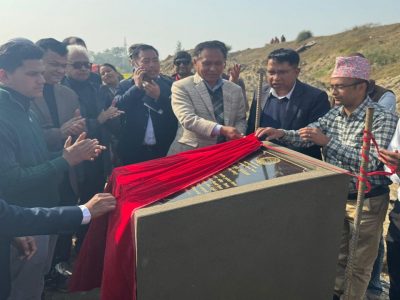The Ways to Sparking Innovation and Spreading Humanity: An Opinion

This paper explores the essence of being innovative – how to not just create new things but to create with purpose and human touch. Innovation at its core should be a force for good, fostering connections and progress. Curiosity, empathy, collaboration, empowerment, and advocacy – We can transform innovation from a mere pursuit of the new to a powerful force that uplifts humanity and shapes a better world. This is the true essence of innovative thinking, in which creativity serves not just to invent but also to connect, empower, and ultimately spread humanity.
Being innovative and creating something new are powerful ways to leave our mark on the world. Here is my opinion on how we can cultivate that spark and use it to spread kindness and understanding.
1. Fueling the Fire of Innovation
Ignite an innovative spirit. Ask “why?” Relentlessly questioning everything. Explore unfamiliar ideas to spark connections. Embracing mistakes as lessons, not failures. Dive into diverse fields, such as art and science for inspiration. Finally, they were not afraid of experimenting and building rough models to test wild ideas. This curiosity, open-mindedness, and willingness to try fuels innovation.
Embrace Curiosity: The Engine of Innovation
Curiosity is a cornerstone of innovation. It’s the child within us, constantly asking “why” and “how,” relentlessly digging deeper to understand the world around us. This insatiable curiosity fuels innovation in several ways.
Questioning Assumptions: We often take things for granted, accepting the way things are done, without considering alternatives. By asking “why” something is done in a certain way, we challenge the underlying assumptions. This opens the door for new possibilities and innovative solutions.
Sparkling Connections: Curiosity is not confined to a single domain. When we delve into unfamiliar territory, be it a new field of study or a completely different culture, we encounter new perspectives and ideas. These unexpected connections can spark groundbreaking innovation by combining seemingly unrelated concepts.
Fueling Exploration: Curiosity propels us to explore the unknown. This compels us to experiment, to tinker, to see what happens when we push boundaries. This exploration leads to a deeper understanding of the world. During this exploration, we stumble upon unexpected discoveries, which are the seeds of future innovation.
By embracing curiosity and fostering a questioning mind, we can unlock a world of possibilities. It is the key to opening the door to innovation, allowing us to create novel solutions, challenge the status quo, and ultimately make the world a better place.
2. Connecting the Dots: The Magic of Cross-Pollination
Innovation rarely emerges from a vacuum. This is often the result of unexpected connections between seemingly disparate ideas. This process, sometimes called “cross-pollination,” is similar to planting seeds from different gardens and watching them grow into vibrant, unexpected flowers.
Imagine an engineer fascinated by bird nests, noticing their intricate lightweight structure. This curiosity might lead them to connect the dots between nest-building techniques and bridge design, resulting in lighter and more efficient bridges.
Similarly, an artist studying the patterns of butterfly wings may be inspired to create a new architectural motif. This cross-pollination can spark brilliant solutions through.
Breaking down Silos: We tend to compartmentalize knowledge. By looking for connections between seemingly unrelated fields, we broke down these barriers. This allows us to see problems from new perspectives and come up with solutions that might not be apparent within one discipline alone.
Fostering Creativity: When connect diverse ideas, we challenge our assumptions and spark new ways of thinking. This is a breeding ground for creative solutions. Imagine a doctor inspired by musicians’ use of rhythm to develop a new physical therapy technique.
Fueling Innovation: These unexpected connections can lead to groundbreaking innovation. Velcro’s invention, for instance, was inspired by burrs that stuck to the inventor’s dog’s fur. By looking for connections between the natural world and human needs, new possibilities have emerged.
By actively seeking connections between seemingly unrelated ideas, we unlock the magic of cross-pollination. This allowed us to solve problems in new ways and create entirely new things. It is a powerful tool for innovation, pushing the boundaries of what is possible, and shaping a better future.
3. Embracing Failure: The Stepping Stones to Success
Failure in the pursuit of innovation is inevitable. New ideas often require experimentation, which often leads to missteps. However, the key is not to see these stumbles as roadblocks but rather as stepping stones on the path to success. Therefore, embracing failure is crucial for innovation.
Learning from Mistakes: Failure, when approached constructively, offers valuable lessons. By analyzing what went wrong, we could identify weaknesses in our approach and refine our strategies. This newfound knowledge helps us to avoid repeating the same mistakes and paves the way for future success.
Building Resilience: Overcoming setbacks fosters resilience and the ability to recover from challenges. Each time we learn from a failure and keep moving forward, we become more adaptable and better equipped to navigate the inevitable bumps on the road of innovation.
Developing Grit: Innovation often requires perseverance. There will be times when the forward path seems unclear, or the results are discouraging. Embracing failure teaches us grit, the determination to keep pushing despite the obstacles. This grit is essential for seeing innovative ideas through fruit.
Embracing Unknown: Innovation thrives on exploration. We often venture into uncharted territories where mistakes are more likely. However, by fear of failure, we limit ourselves to stifle creativity. Embracing failure allows us to take the calculated risks and explore new possibilities, which is the lifeblood of innovation.
Failure is an ever-present companion on the path to innovation. By viewing it as a teacher, builder of resilience, and catalyst for exploration, we can transform setbacks into stepping stones on the journey towards groundbreaking ideas. Through this willingness to embrace failure, we can truly unlock our innovative potential.
4. Feeding the Fire of Inspiration: A Tapestry of Experiences
Innovation thrives on the spring of inspiration. Just as fire needs fuel to blaze brightly, innovative thinking requires constant exposure to diverse experiences. Here is how immersing ourselves in different fields and engaging with the world can spark our creative sparks:
Exploring Diverse Fields: Innovation rarely arises from a single perspective. By delving into subjects such as art, science, or history, we encounter new ways of thinking and problem-solving. Artists might find inspiration in the complex structures of nature, leading to innovative forms of sculpture. Similarly, a scientist studying animal behavior might discover a new approach to engineering based on how animals adapt to their environment.
Embracing the Natural World: Nature is a powerful source of inspiration. A simple walk in the woods can spark creativity. The intricate patterns of a leaf, the graceful movements of an animal, and the sheer vastness of the night sky can all ignite fresh ideas and inspire innovative solutions.
Seeking different perspectives: Engaging in conversations with people from different backgrounds is another key to fueling inspiration. Hearing different viewpoints and experiences challenges our assumptions, and broadens our understanding of the world. Talking to someone with a completely different profession or from a different culture can spark unexpected connections and lead to innovative solutions to existing problems.
By actively seeking diverse experiences, we create a rich tapestry of knowledge and inspiration. This fuels creativity and allows us to approach challenges from multiple angles, fostering groundbreaking ideas and novel solutions. By embracing the beauty and complexity of the world around us, we truly unlock the full potential of innovation.
5. Experimentation and Prototyping: Building the Bridge Between Ideas and Reality
Innovation thrives based on the willingness to experiment and test the boundaries of what is possible. It is not enough to simply have a great idea; we must put it into action and see how it works. This is where the experimentation and prototyping occurred.
Embracing the “What If?” Do not be afraid of trying new things, even if they seem silly at first. Innovation often arises from outlandish ideas. By shutting down possibilities because they seem unconventional, we can limit ourselves. Encourage a “what if?” mentality, where we explored the potential of untested concepts. Playful experimentation can lead to unexpected breakthroughs.
Turning Ideas into Reality: The path from idea to innovation requires a bridge. This bridge was built through prototyping and the process of creating rough models to test our concepts. These prototypes do not have to be fancy or perfect; they simply need to be tangible representations of the idea. Building prototypes allowed us to
Identify Flaws: By testing a prototype in the real world, we can quickly identify any weaknesses or flaws in our initial design. This allows us to iterate and refine the concept before investing significant resources.
Gather Feedback: Prototypes are a powerful tool for gathering feedback from others. Whether it is shown to colleagues or potential users, early feedback can be invaluable in shaping and improving our ideas.
Validate Assumptions: Building a prototype helps us validate our assumptions regarding how something will work. This allows us to course-correct early, if needed, thus saving time and resources.
By embracing experimentation and creating rough prototypes, we bridged the gap between theoretical ideas and practical solutions. This “build it, test it, refine it” approach is essential for turning innovative ideas into reality and making a positive impact on the world.
6. Crafting Novelties with Human Touch
Do not just invent and innovate with the heart? Focus on human needs and problem-solving. Design with empathy, considering how creations can improve lives and connect them. Recall that powerful innovations are often wrapped in compelling stories. Share the potential of our idea to have a positive impact, inspiring others to join our journey.
Focusing on Needs: The Spark of Meaningful Innovation
Innovation is not just about creating something new; it is also about creating something that solves a problem and improves lives. The most impactful innovations have been derived from a deep understanding of human needs. Here, why focus on needs is the spark that ignites meaningful innovation:
Identifying Challenges: The world is full of problems, from the mundane frustrations of daily life to complex social and environmental issues. By actively looking for these challenges, we tap into the wellsprings of potential innovation. The key is to see these challenges not as obstacles but as opportunities to create positive change.
Empathy as the Guiding Light: True innovation is driven by empathy and the ability to understand and share the feelings of others. By considering the needs and challenges faced by people around us, we can develop solutions that are not just technically sound but also truly impactful.
Solutions that Matter: Focusing on needs ensures that our innovations address real problems and have a positive impact on the world. Imagine creating a new educational tool that makes learning accessible to everyone or developing a sustainable energy source that combats climate change. When innovation is rooted in addressing needs, it is a powerful force.
Finding Inspiration Close to Home: Do not underestimate the power of everyday problems. It may be a cumbersome household chore, frustrating experience using a public service, or a lack of resources in the community. These seemingly small challenges can be the starting point for impactful innovation. By focusing on the needs close to us and letting empathy guide our creativity, we can spark innovations that make a real difference to the lives of others.
7. Empathy: The Heart of Human-Centered Innovation
Innovation thrives on empathy, the ability to step outside ourselves, and understanding the needs, desires, and struggles of others. By weaving empathy into the fabric of innovation, we can create solutions that not only address problems, but also improve lives and foster connections. Here’s how:
User-Centered Design: Empathy is the cornerstone of user-centered design, a philosophy that places the user at the forefront of the innovation process. By involving users in the design process, understanding their challenges, and tailoring solutions to their specific needs, we can create innovations that are truly beneficial and user-friendly.
Beyond Functionality: Innovation goes beyond just creating something functional. Empathy allows us to consider the emotional impact of our creations. Can innovation make someone’s life easier, less stressful, or more fulfilling? Does it promote connections and build bridges between people? Keeping these questions in mind, we can create innovations that resonate at a deeper level.
Building Bridges, Not Walls: In today’s increasingly connected world, empathy is key to fostering a sense of community and belonging. Innovation designed with empathy in mind can bridge divides, break down barriers, and encourage collaboration. Imagine a communication tool that allows people from diverse backgrounds to connect with and understand each other at a deeper level. This represents the power of empathy-driven innovation.
From Ideas to Impact: Empathy does not stop at the ideation stage. Thus, it is crucial to consider the potential impact of innovation on a broader scale. Will this exacerbate existing inequalities or create new opportunities for everyone? Does this promote social and environmental well-being? By continuously applying empathy throughout the innovation process, we ensure that our creations contribute to a more connected and just world.
Placing empathy at the heart of innovation, we can move beyond simply creating new things to start creating a better future for all. We can design solutions that not only solve problems, but also foster connections, understanding, and a sense of shared humanity. This is the true power of innovation driven by empathy.
8. Storytelling: The Language of Innovation
Innovation isn’t just about the “what” – it’s about the “why” and the “how.” Even the most ingenious ideas can fall flat if they fail to connect with others on an emotional level. Storytelling is a powerful tool for innovation.
The Power of Narrative: Stories have the ability to capture our hearts and minds. By framing innovation within a compelling narrative, we can connect with people at a deeper level and make our ideas more relatable. Imagine a scientist fighting climate change who describes their innovation as a shield protecting future generations. This narrative evokes a sense of urgency and the inability to achieve dry technical jargon.
Sharing Impact: Innovation Thrives on Purpose. We use storytelling to share the potential positive impacts of our creation. Explain how it will solve problems, improve lives, or make the world a better place. Storytelling allows people to visualize our innovation in the future, fostering enthusiasm and inspiring support.
Making it Real: Stories connect with us because they are humans. Using personal anecdotes, real-world examples, or even humor to make our innovation relatable. The more people can see themselves or their loved ones benefitting from our idea, the more invested they are in its success.
From Innovation to Inspiration: By using storytelling effectively, we can transform our innovation from a technical concept into a source of inspiration. We can spark excitement, ignite a sense of possibility, and motivate others to be involved. This can be crucial in attracting funding, building a team, and ultimately making our innovation a reality.
Remember that great stories do not just inform them; they inspire them. By weaving a powerful narrative around our innovation, we can capture the imagination of others and turn our creation into a force of positive change in the world.
9. Spreading Humanity through Innovation
Innovation is not just about cool tech; it is about using creativity for the good. Focus on collaboration, sharing knowledge freely to accelerate progress. Empower others with our inventions and create tools that unlock their potential. Advocate for positive change and use our voice to inspire a more innovative and humane world. Innovation has become a tool for spreading human connections and progress by fostering collaboration, open-source sharing, and empowerment.
Collaboration is King: The Power of Teamwork in Innovation
The path to innovation is rarely solitary. While a single spark of creativity can ignite fire, it is often the collaborative spirit that fuels the flames and brings groundbreaking ideas to life. Here is why collaboration reigns supreme in the realm of innovation:
Diversity Breeds Brilliance: No single person has all answers. By working with others who bring diverse perspectives and skillsets to the table, we can explore a wider range of possibilities and overcome the blind spots. Imagine an engineer collaborating with a social scientist to design a new educational application. Their combined expertise can lead to more effective and engaging learning tools.
Synergy and Serendipity: Collaboration fosters a dynamic environment in which ideas can bounce off one another, leading to unexpected breakthroughs. Sharing insights, challenging assumptions, and building upon each other’s work can spark moments of serendipity where seemingly unrelated ideas collide to create something truly revolutionary.
Strength in Numbers: The Challenges faced by innovators can be daunting. Complex problems often require concerted efforts from teams with complementary skills. Working collaboratively allows us to leverage diverse strengths, tackle intricate issues from multiple angles, and ultimately achieve more than a single person alone.
Building a community: innovation thrives in a supportive community. Collaboration fosters a network of like-minded individuals, who can share ideas, offer encouragement, and provide valuable feedback. This sense of community fosters a collective spirit in which success is celebrated and challenges are overcome.
Collaboration is not only about working in the same room. It is about embracing open communication, fostering a culture of respect for diverse ideas, and celebrating collective effort. By harnessing the power of collaboration, we can unlock a world of possibilities, accelerate innovation, and pave the way for a bright future.
10. Open Sourcing Our Ideas: Sharing the Spark for Collective Progress
Innovation thrives with openness. By choosing to open source ideas, we are not just sharing knowledge; we are igniting a collaborative fire that can accelerate progress for the greater good. Therefore, open sourcing is a powerful tool for innovation.
Fueling Collaboration: Open-source projects are, by definition, collaborative. When we share our ideas and creations freely, we invite others to contribute, build upon, and improve them. This fosters a global community of innovators who work together to solve problems and push boundaries. Imagine a programmer developing an open-source software framework. Suddenly, developers worldwide can contribute to code, identify bugs, and suggest improvements, leading to a more robust and powerful tool for everyone.
Accelerating Progress: Innovation is a marathon, not a sprint. By open-sourcing our ideas, we tap into the collective intelligence of a vast pool of talent. This allows for faster problem solving, faster iteration cycles, and a significant acceleration in the development process. Imagine that a scientist openly shares their research findings. Other researchers worldwide can build upon their work, leading to faster breakthroughs and advancements in the field.
Transparency and Trust: Open-source fosters trust and transparency within an innovation community. By making our ideas and creations readily available for scrutiny and improvement, we demonstrate confidence in our work and encourage others to do so. This transparency leads to a more robust ecosystem of innovation, in which collaboration and progress are fueled by mutual trust.
Building a Commons: Think of open source as creating a “common” for innovation, a shared space where everyone can contribute and benefit. This shared pool of knowledge and resources allows everyone to build upon the work of others, leading to cumulative advancement that would not be possible with isolated efforts. Consider a library of open-source hardware designs. Anyone can access these designs, modify them for their needs, and contribute to their own improvements, creating a constantly evolving repository of knowledge and innovation.
Open Source Beyond Code: Open source is not just for software developers. This philosophy can be applied to any innovation field. Sharing research findings, design plans, or even educational materials can all contribute to open-source commons and accelerate progress towards a better future.
By choosing to open source our ideas, we are not just giving something away; we are contributing to a collective effort that can change the world. We are fostering collaboration, accelerating progress, and building a brighter future.
11. Empower Others: Innovation for the Collective Good
Innovation is not only about creating cool gadgets. It involves harnessing the power of creativity to empower others and unlock their full potential. Here is how innovation can become a tool for collective progress.
Democratizing Access: Imagine using our innovation to create a platform that makes knowledge or resources previously available only to a select few accessible to everyone. This could be an educational tool that personalizes learning, or a healthcare platform that connects people with specialists in remote areas. By democratizing access, we empower others to overcome their limitations and pursue their goals.
Fostering Creativity: Think about how our innovation can spark the creative spirit of others. It may be a collaborative design platform that allows anyone to contribute ideas or a tool that simplifies complex tasks, freeing up time and energy for creative pursuits. Empowering others to be creative fuels a collective wellspring of innovation.
Building Confidence: Our innovation can be a catalyst for building confidence in others. Imagine creating a platform that connects people with mentors or provides feedback on their work. By giving others the tools and support they need to succeed in, we empower them to believe in themselves and reach their full potential.
Enabling Collaboration: Collaboration thrives when everyone has the voice and tools to contribute. Innovation can act as a bridge, allowing people with diverse skills and backgrounds to work together towards shared goals. This fosters a sense of community and empowers individuals to achieve what they cannot achieve alone.
Beyond Tools: Empowerment is not just about technology. Our innovation may be a new educational philosophy that fosters critical thinking, or a social movement that promotes inclusivity. The key is to use our ideas to create a world in which everyone has the opportunity to thrive.
Innovation with a Human Touch: By focusing on empowerment, we ensure that our innovation serves not just as a solution but also as a catalyst for positive change. We are not just creating something new; we are creating a ripple effect that empowers others, unlocks potential, and ultimately, builds a better future for all.
12. Advocate for Change: The Power of Our Voice in Shaping a Better Future
Innovation does not exist in a vacuum. It thrives when coupled with a voice that advocates positive change and inspires others to embrace innovative solutions. Here is how our voice can become a powerful tool for progress:
Championing Our Innovation: Our innovation has the potential to make a real difference, but it needs a champion. Innovation advocates explain its benefits, address its concerns, and generate excitement. Speak at conferences, write articles, or connect with relevant influencers to spread the word and build momentum.
Raising Awareness: Many innovative solutions struggle to gain traction because people are unaware of them. We use our voice to raise awareness about the challenges our innovation addresses and its positive impact. This can involve social media campaigns, community outreach programs, or even creative demonstrations to capture people’s attention.
Building Bridges: Innovation can be disruptive, and sometimes people fear change. We use our voice to build bridges between the old and new. Explain how our innovation addresses existing concerns and complements existing solutions. By fostering understanding and collaboration, we can encourage broader adoption of innovative solutions.
Inspiring Action: A powerful advocate does not just inform; they inspire. We need to use our voices to tell stories about how our innovation is improving lives. Showcase real-world examples of its impact and highlight its potential for even greater changes. By inspiring others to take action and embrace innovation, we can create a movement towards positive change.
Beyond innovation, advocacy is not limited to promoting one’s own ideas. It is necessary to use our voices to champion other innovations that align with our vision of a better future. Support organizations working on similar challenges and speak out against solutions that hinder progress.
The Ripple Effect of Advocacy: By becoming an advocate of change, we create a ripple effect. Our voices can inspire others to speak up, encourage collaboration, and ultimately pave the way for the widespread adoption of innovative solutions that can truly change the world. Remember that innovation is powerful but it is our voice that ignites its transformative potential.
Innovation is not just about the creation of new technologies. It is about using creativity to solve problems and to make the world a better place. By focusing on human needs and collaboration, we can use our innovative spirit to promote kindness, understanding, and progress.
Facebook Comment
latest Video
Trending News
- This Week
- This Month












